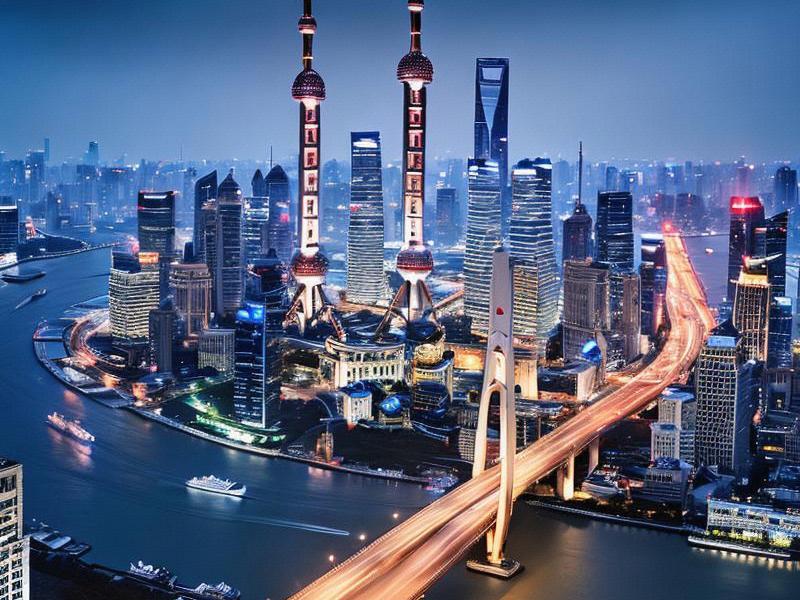Shanghai: A Dynamic Metropolis of Innovation and Culture
⏱ 2025-04-23 00:41 🔖 阿拉爱上海千花网
📢0℃

Shanghai, often referred to as the "Pearl of the Orient," stands as a testament to China's rapid modernization and its integration into the global economy. As the largest city in China and one of the world's most populous metropolitan areas, Shanghai is a vibrant hub of economic activity, cultural exchange, and technological innovation. This article aims to provide an in-depth look at the various facets of Shanghai, showcasing its unique blend of tradition and modernity.
Historical Background and Urban Development
Shanghai's history dates back over 2,000 years, but it was during the 19th century that the city began to emerge as a significant global port. The Treaty of Nanking in 1842 opened Shanghai to foreign trade, leading to the establishment of the International Settlement and the French Concession. This period of colonial influence left a lasting architectural legacy, with buildings such as the Bund and the former Racecourse now serving as iconic landmarks.
In the latter half of the 20th century, Shanghai underwent rapid urbanization and industrialization, becoming a symbol of China's economic reforms. The opening of the Pudong New Area in 1990 marked a new era for the city, with the construction of the iconic Oriental Pearl Tower, the Jin Mao Tower, and the Shanghai World Financial Center. Today, Pudong is home to some of the world's tallest skyscrapers and a thriving financial district.
Economic Hub and Global Influence
Shanghai is the economic engine of China, contributing approximately 3.8% of the country's GDP while hosting 25% of its foreign direct investment. The city is a major center for finance, trade, shipping, and manufacturing. The Shanghai Stock Exchange is one of the largest in the world, and the city is home to the headquarters of numerous multinational corporations.
夜上海419论坛
The Port of Shanghai, the busiest container port globally, underscores the city's importance in international trade. Its strategic location on the Yangtze River Delta makes it a critical node in China's domestic and international logistics network. Additionally, Shanghai is a key player in China's Belt and Road Initiative, facilitating connectivity between Asia, Europe, and Africa.
Innovation and Technology
Shanghai is at the forefront of China's technological advancements. The city has established itself as a leading center for research and development, with numerous high-tech parks and innovation hubs. Zhangjiang Hi-Tech Park, for instance, is home to many of China's top biotech companies and startups.
The city's commitment to innovation is evident in its smart city initiatives. Shanghai has implemented various digital solutions to enhance urban living, including intelligent transportation systems, digital governance platforms, and smart energy management. The launch of the Shanghai Artificial Intelligence Laboratory and the establishment of the Zhangjiang National Laboratory for Brain-Inspired Intelligence further highlight the city's focus on cutting-edge research.
Cultural Vibrancy and Heritage
上海龙凤阿拉后花园
Despite its rapid modernization, Shanghai has managed to preserve its rich cultural heritage. The city is known for its blend of traditional Chinese and Western architectural styles, reflected in areas like the French Concession and the Old City. The Bund, with its historic buildings and stunning views of the Huangpu River, is a popular tourist destination.
Shanghai's cultural scene is thriving, with a vibrant arts and entertainment industry. The city hosts numerous festivals, including the Shanghai International Film Festival, the Shanghai Fashion Week, and the Shanghai Spring International Music Festival. The Shanghai Museum, one of the oldest and most prestigious museums in China, houses an extensive collection of Chinese art and artifacts.
The culinary scene in Shanghai is another highlight, with its signature dishes such as Xiaolongbao (soup dumplings), Shengjianbao (pan-fried dumplings), and Nanxiang Mantou (steamed buns). The city's night markets and bustling food streets offer a taste of its diverse culinary traditions.
Challenges and Future Prospects
While Shanghai has achieved remarkable success, it faces several challenges. Rapid urbanization has led to issues such as traffic congestion, air pollution, and housing shortages. The city government has implemented various measures to address these concerns, including the expansion of public transportation networks, the promotion of green technologies, and the development of affordable housing projects.
爱上海419论坛
Climate change poses another significant challenge, with rising sea levels threatening the city's low-lying areas. Shanghai has taken proactive steps to enhance its resilience, including the construction of seawalls and the implementation of water management strategies.
Looking ahead, Shanghai aims to continue its trajectory of growth and innovation. The city's vision for the future includes becoming a global leader in technology, finance, and culture. Initiatives such as the Free Trade Zone and the Science and Technology Innovation Board are expected to further enhance Shanghai's position on the world stage.
Conclusion
Shanghai's journey from a traditional port city to a global metropolis is a story of resilience, adaptability, and ambition. Its success serves as an inspiration for other cities around the world, demonstrating the potential of urban development and economic reform. As Shanghai continues to evolve, it remains a beacon of innovation and cultural exchange, embodying the spirit of modern China.
In conclusion, Shanghai's multifaceted character, encompassing its historical legacy, economic prowess, technological advancements, cultural vibrancy, and commitment to sustainability, makes it a truly unique and dynamic city. Its ability to balance tradition and modernity, while addressing the challenges of urbanization and climate change, positions it as a model for future urban development.
Shanghai’s Gilded Lounges: Where Art Deco Opulence Meets AI-Curated ExtravaganceThe Great Shanghai Convergence: How the Mega-City Is Reshaping the Yangtze Delta Region"Code and Qipao: How Shanghai's Women Are Rewriting the Rules of Modern Femininity"The Yangtze River Delta Megaregion: Shanghai's Bold Vision for Integrated Urban Future《海派丽人启示录:上海女性审美变迁与都市文化演进》弄堂里的"新主人":上海城市更新中的社区共生与文化新生Shanghai's Nocturnal Revolution: How the City Redefines Luxury Entertainment《从"百乐门"到"数字包厢":解码上海娱乐会所的百年进化史》文章开始Shanghai's Beauty: A Blend of Tradition and ModernityShanghai 2045: The Living Laboratory of Urban Futurism

